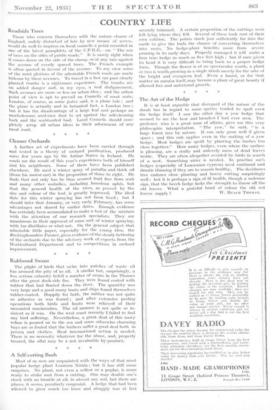The Art of the Hedge
It is at least arguable that disregard of the nature of the shrub hag in regard to some species tended to spoil even the hedge itself. I saw the other day a yew hedge that seemed to me the best and broadest I had ever seen. The gardener, who is a great man of affairs, gave me this very philosophic interpretation. " The yew," he 'said; " is a large forest tree by nature. It can only grow well if given space ; and this rule applies even in the making of a yew hedge. Most hedges are spoilt by planting the bushes too close together." How many hedges, even where the surface is pleasing, are a stuffy and unlovely mess of dead leaves inside. They are often altogether avoided by birds in search of a nest. Something airier is needed. In practice such hedges (especially of Lawsonian cypress) need continual and drastic thinning if they are to remain healthy, The deciduous tree endures close planting and heavy cutting surprisingly well ; but it is perhaps a sign of ill health, though a welcome sign, that the beech hedge lacks the strength to throw off the old leaves. What a grateful band of colour the old red






























































































 Previous page
Previous page